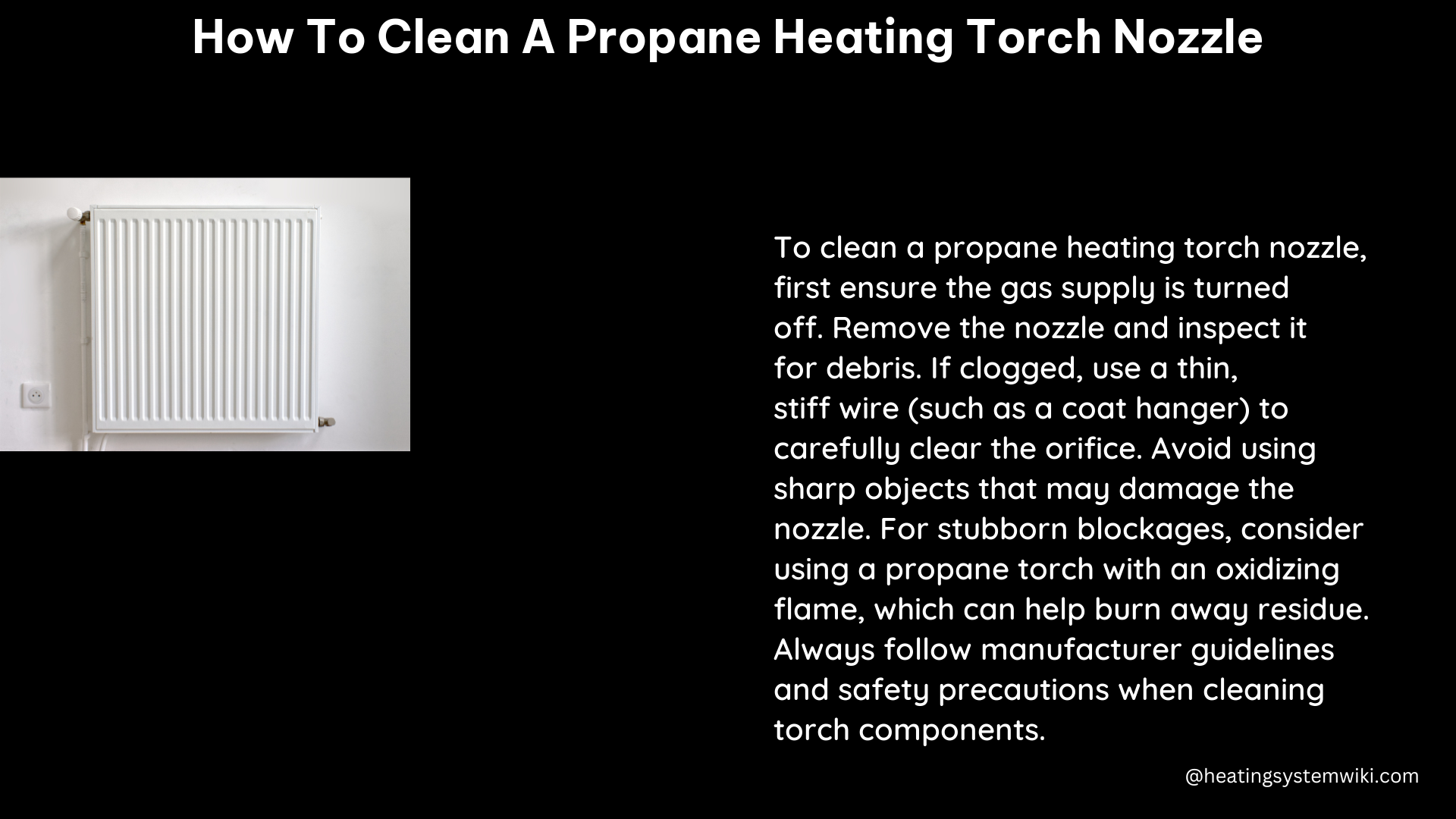Cleaning a propane heating torch nozzle is a crucial task to maintain the efficiency and performance of your tool. This comprehensive guide will provide you with advanced, hands-on details and technical specifications for effectively cleaning a propane heating torch nozzle, ensuring optimal operation and longevity.
Using a Propane Torch
One of the most common methods for cleaning a propane heating torch nozzle is to use a propane torch itself. This technique involves directly heating the nozzle to melt and remove any residue or clogs. However, this method may not be as effective if the nozzle is heavily clogged, as the flame may not be able to reach the clog due to the lack of oxygen.
To improve the effectiveness of this method, an oxy-acetylene torch can be used instead. Oxy-acetylene torches provide a much hotter and more oxygen-rich flame, which can help burn away any residue or clogs more effectively. When using an oxy-acetylene torch, it is important to use a slightly oxidized flame and to keep the nozzle just at the far tip of the flame to avoid overheating it. The nozzle should not be allowed to get past a very dull red color, as this can cause it to melt.
The ideal temperature range for heating the nozzle with an oxy-acetylene torch is between 1,200°C (2,192°F) to 1,400°C (2,552°F). Exceeding this range can lead to the nozzle material becoming too soft and potentially deforming or melting.
Using a Benchtop Vise and Coat Hanger Wire

Another effective method for cleaning a propane heating torch nozzle involves using a benchtop vise and a piece of uncoated coat hanger wire. This technique involves securely holding the nozzle in place using the benchtop vise while heating it with a propane torch.
After heating the nozzle, the uncoated coat hanger wire can be used to carefully push the clog out from the bottom of the nozzle. This method is particularly effective for removing larger clogs or obstructions from the nozzle itself, but it may not be as effective for removing residue from the inside of the barrel.
It is important to use a wire with a diameter that is slightly smaller than the internal diameter of the nozzle, typically around 1.5-2 mm (0.059-0.079 inches), to ensure a snug fit and effective clog removal.
Using an Air Compressor
Another cleaning method for propane heating torch nozzles involves the use of an air compressor. This technique involves heating the nozzle with a propane torch and then using the air compressor to blow out any heated plastic or residue from the back of the nozzle.
This method can help ensure that the diameter of the nozzle opening remains undamaged, which is crucial for maintaining consistent settings and performance. However, this method may not be as effective for removing larger clogs or extensive residue buildup from the inside of the barrel.
When using an air compressor, it is recommended to use a maximum air pressure of 40-50 PSI (2.8-3.4 bar) to avoid damaging the nozzle or causing any deformation.
Using Solvents
In some cases, soaking the propane heating torch nozzle in solvents can be an effective way to remove clogs and residue. This method involves submerging the nozzle in a suitable solvent for several hours, depending on the type of plastic or material being used.
Common solvents used for this purpose include acetone, isopropyl alcohol, and specialized nozzle cleaning solutions. It is important to choose the right solvent based on the specific materials used in the nozzle, as some solvents may not be compatible with certain plastics or coatings.
When using solvents, it is crucial to follow all safety guidelines, including proper ventilation, personal protective equipment, and proper disposal of the used solvent. Exposure to certain solvents can be hazardous, so caution is advised.
Safety Considerations
Regardless of the cleaning method used, it is essential to prioritize safety when working with propane heating torches and their nozzles. Always wear appropriate personal protective equipment, such as heat-resistant gloves, safety goggles, and a well-ventilated work area. Avoid direct skin contact with hot surfaces or chemicals, and follow all manufacturer’s instructions and safety guidelines.
In conclusion, this comprehensive guide provides advanced, hands-on details and technical specifications for effectively cleaning a propane heating torch nozzle. By utilizing the right tools and techniques, you can ensure optimal performance, efficiency, and longevity of your propane heating torch.
